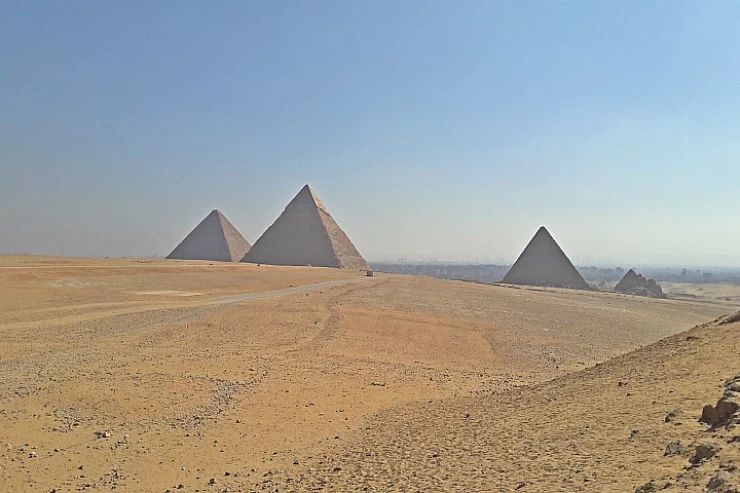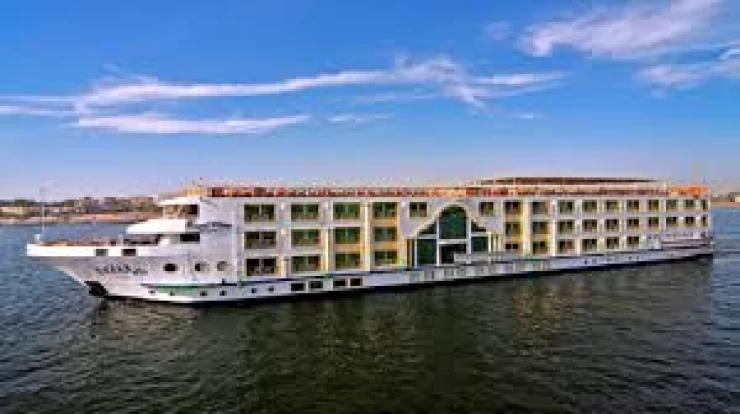
The Mortuary Temple Of Hatshepsut
The Mortuary Temple of Hatshepsut.
To the west bank of the Nile, the temple of Hatshepsut is considered one of the greatest temples of ancient Egypt; it is close to the architectural norm. The temple complex of the Eighteenth Dynasty is believed to have served as the principal temple for this Queen, who was one of the greatest queens of Egypt.
The architectural elements of this temple can still be described in the context of the surrounding mountain, which made the essence of fine architecture so unique because it used multiple terraces within itself.
Construction history
Queen Hatshepsut built the Deir el-Bahri temple in the 15th century BC in the hopes of acquiring posthumous renown among Egypt's powerful kings.
The temple was planned by the close personal attendant of the queen, Senenmut, who was an architect.
The uniqueness of the temple, as opposed to the traditional design of Egyptian temples, lay in its adoption of the stepped conception to monumental buildings.
The temple was violently destroyed after Hatshepsut's death, mainly by her successors, particularly Thutmose III, who tried to wipe out any trace of her reign by exhorting the obliteration of her inscriptions and destruction of some of her statues. Later in history, Christians began to use the temple and its vicinity for worship, gaining the name "Deir el-Bahri," which means "The Monastery on the North Side.".
Some temples at Deir El-Bahri
This area was first put to use by him for the construction of a temple alongside the tomb in which he was interred, covering the road that linked the temple and tomb with ornamental statues, thus establishing the first temple of magnificent design to be built on the western bank of Thebes.
Mentuhotep Temple of the Deir el-Bahri is the most important of the funerary temples in ancient Egypt.
It is beside the Nile and is near to Deir el-Bahri, overlooking Luxor
The monument was built at the behest of King Mentuhotep II, who became the Father of the Middle Kingdom (11th Dynasty) after he united his homeland; thus, the funerary architecture is highly developed.
The very architecture of the temple served as a precedent for later works undertaken by Hatshepsut."
Architectural remedies: The building uses a unique combination of rock and stone; a series of terraces march across the entrance of the Holy of Holies.Statues of the King: Statues of Mentuhotep II were seated in Osirian form as a symbol of rebirth and immortality. Royal tombs: The king was buried here, and the gods Amun-Ra and Mentu were worshiped in this temple.
Architectural influence: Its design was instrumental in forming later temples, especially the one built nearby for the Queen Hatshepsut.
The tombs of some of the queens of the Mentuhotep II dynasty were found next to his temple.
Location and structure of the temple
The temple in Deir el-Bahari forms part of a group of funerary temples, including the Temple of King Mentuhotep II of the Eleventh Dynasty and the Temple of Thutmosis III. The area where the temple resides enjoys considerable natural beauty with Mount Thebes at its back, bestowing a highly dramatic setting. The overall three-tiered main terrace structure connected by broad sloping land has been designed. The terraces are distinguished by open-air courtyards, colonial columns, and mural inscriptions narrating the achievements of Queen Hatshepsut, which include
The temple consists of three tiered main terraces connected by wide slopes. These terraces contain open courtyards, huge columns, and mural inscriptions recounting Queen Hatshepsut's achievements, including
Lower Mastaba: Rows of columns and sphinxes that once adorned the entrance are here.
Middle one: Here is an inscription that describes Hatshepsut's voyage to Punt, the land associated with rich trade.
Upper one: This was linked to the main temple of Amun, which served as a place where various religious and devotional rites were performed.
Another architectural significance of the temple is the note that it is one of the earlier buildings to have utilized large square columns as opposed to circular columns, an architectural feature that later became a common practice in temples.
Inscriptions
The temple is adorned with rich decorations depicting stories from the religious and political life under the reign of Hatshepsut, including some of the most famous inscriptions:
The voyage to Puntland inscriptions describe the details of the sea journey led by the queen to import precious goods such as ivory, timber, and spices, and Hatshepsut's divine birth describes the queen being blessed by the god Amun, thus securing her legitimacy to rule. Finally, religious rituals took place at the temple in memory of Queen Hatshepsut and the worship of Amun.
The importance of this temple in Egyptian history
This temple became one of the most important Egyptian temples in terms of political and artistic power at the time of the New Kingdom's Golden Age. It is also a perfect example of the significant royal and religious legitimation of architectural expression.
Religious and political meaning
Originally, the temple served to honor Amun, but it was also used for the funeral rites of the female king Hatshepsut. In particular, the Holy of Holies in the temple served as the central point of religious rituals.
The huge inscriptions and statues enhanced Hatshepsut's image as a strong queen as well as ensuring that the legitimacy of her female kingship was emphasized in a society that seemed biased toward male rulers.
Temple’s Discovery
Decorated by years buried under the sand, the Deir-al-Bahri temple was discovered during the 19th century by archaeologies. Ever since, many restoration works have been done by different archaeological missions, the most celebrated probably being the efforts of the Polish Archaeological Institute, which contributed massively to restoring some inscriptions and reconstructing a few destroyed parts of the temple.
This old temple that has buried within itself sand is a modern tourist attraction; thousands of visitors are now fascinated by this place every year.
















